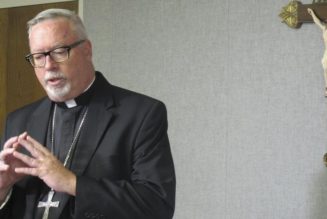Happy Friday friends,
And a very happy feast of St. John XIII to all who celebrate — and all of you should.
Papa Roncalli is best remembered as the pope who convoked Vatican Council II, and in that sense at least I tend to think of him as at least co-patron saint of this era in the life of the Church.
Of course, he also is the pope who initiated the wholesale reform of the Code of Canon Law, recognizing that barely 40 years after its promulgation it was falling hopelessly behind the shifting realities of ecclesiastical life.
More to the point for our current moment, John was also the pope who convoked a synod for the Diocese of Rome, this first in its history, and I often find myself thinking of the current synodal session there and muttering a saltier version of the saint-pope’s apocryphal quote: “It’s your Church, Lord, I’m going to bed.”
But I think of John XXIII most and best as the author of the encyclical Mater et Magistra, a document to which I have returned many times in my life, often finding something to challenge me, always being struck by something new, and growing into a deep love for its power to teach the mind and guide the conscience.
“Christianity is the meeting-point of earth and heaven,” it opens by saying.
“It lays claim to the whole man, body and soul, intellect and will, inducing him to raise his mind above the changing conditions of this earthly existence and reach upwards for the eternal life of heaven, where one day he will find his unfailing happiness and peace.”
If I were pope, I’d hang that in the synodal hall.
Here’s the news.
The News
The top story this week, which we were first to report, is the unprecedented action by the Dicastery for the Doctrine of the Faith to overrule an attempt by the Vatican’s Secretariat of State to reinstate a priest laicized for the abuse of minors.
Last month, Peña Parra attempted to overrule a canonical process involving two local tribunals and the DDF which laicized Príncipi for multiple counts of child sexual abuse. The sostituto, who acts as the papal chief of staff, said the decision followed “subsequent evidence presented by some diocesan bishops of Argentina,” though he did not say to whom it was presented.
In response, Kennedy declared the sostituto’s order annulled, that Príncipi’s laicization was in full and final force, and that “the case has been closed.”
—
Key among the questions raised by the Príncipi case is what, if anything, Pope Francis knew about his chief of staff’s illegal intervention in favor of a twice-convicted child abuser, and to what extent, if any, Peña Parra was acting on his orders.
But any way you slice it, we are looking at a titanic clash in the Vatican between the power of personal influence and the rule of law. And given the nature of what Peña Parra tried to do, and the finality of how he was overturned by Kennedy, it seems clear that the fallout from this will be significant.
The question now is: will it be kept behind closed doors, or will there be some public accountability for Peña Parra? If there isn’t, I think that could tell us everything about how things really work in Rome on sexual abuse cases — and it wouldn’t be good.
—
Authorities in the Russian-aligned dictatorship of Belarus reportedly detained another Catholic priest this week. Fr. Yury Barauniou was subject to “administrative arrest” Oct. 7 for alleged possession of “extremist materials.”
The legal definition of “extremist materials” extends to all print and online publications that could be considered critical of the country’s longtime dictator Alexander Lukashenko, his government, or his ally Russia’s war in Ukraine.
Basically, reading any Western newspaper, or even The Pillar, would probably be enough to get you locked up.
A total of 31 Catholic priests have now been subject to administrative arrest in the country since 2020, when mass protests broke out after Lukashenko claimed victory in a disputed presidential “election.”
—
The apostolic administrator of the archdiocese at the heart of the Syro-Malabar Church’s liturgy dispute has announced a controversial overhaul of the local curia.
The protest took place amid rising tensions over the fate of eight transitional deacons awaiting their priestly ordinations in the archeparchy. Puthur said that following the occupation, “priests serving in the archdiocesan office informed me in writing of the difficulty in continuing to carry out their responsibilities.”
As a result, “it was necessary to make new appointments in their positions.”
The personnel changes, which took effect Oct. 9, include the removal of the archeparchy’s protosyncellus, syncellus, chancellor, vice chancellor, and assistant finance officer — a sweeping turnover.
—
The week began with the announcement by Pope Francis of a slate of new members of the College of Cardinals, due to be formally created in December.
As he notes, the five new cardinals have very different pastoral styles, theological backgrounds, and priorities —and it would be hard to argue that there is a clear ideological unity between Latin America’s newest cardinals.
Meanwhile, Down Under, JD considered the surprise pick of the next consistory, the Ukrainian Catholic Bishop Mykola Bychok of Melbourne — who is not the major archbishop of his sui iuris Eastern Catholic Church, or even a metropolitan archbishop in the Eastern Catholic Church.
Of course, many Catholics in Ukraine and in Australia have, for years, been noting and lamenting the absence of a cardinal to represent their communities, and Bychok is an interesting choice by Francis in as much as he sort of checks both boxes without checking either or them — at least in the way people had been hoping for.
Perhaps even more interestingly, as JD explained in his analysis, Bychok’s creation as a cardinal has the potential to upset the synodality — the actual synodal governance of Eastern Catholic Churches — of the Ukrainian Greek Catholic Church.
This isn’t an idle consideration and, as JD points out, it is a real challenge to the synodal health of the largest Eastern Catholic Church.
Hagan lío, I guess?
—
A public prosecutor’s office in Switzerland has closed an investigation into alleged inappropriate conduct toward young people by an abbot who serves as a member of the Swiss bishops’ conference.
As a territorial abbot, the canonical equivalent of a diocesan bishop, Scarcella is one of the nine members of the Swiss bishops’ conference.
The abbot stood aside from office last year, pending the results of a canonical preliminary investigation into the allegations. The results of that investigation are currently being studied in Rome.
St. Bernard’s School of Theology and Ministry is a Catholic graduate school reuniting theology, prayer, and sanctity. They want to provide you with ongoing formation of mind and heart and are offering the opportunity to join one of two online spring 2025 courses: either Catholic Social Teaching or The Gift of Meaning: The History of the Church for only $35. Application deadline is January 17th, 2025. Learn more!
La Suprema
When we broke the story this week of how the DDF publicly voided the sostituto’s bid to reinstate a laicized and twice-convicted child abuser, my immediate reaction was that this is the single biggest story to come out of Rome this year.
On reflection, I think that may be underselling it.
I laid out yesterday in an analysis the various possibilities for who was involved in the Príncipi affair, and the options for how Archbishop John Joseph Kennedy came to publicly tell the papal chief of staff Archbishop Edgar Peña Parra to get back in his box and mind his own business.
We don’t know yet how this all came to happen, or where things will go from here. But I am confident in asserting that Kennedy vs. Peña Parra is the most significant curial clash of personalities since 2016, when the current sostituto’s predecessor, Cardinal Angelo Becciu, moved to block a Vatican-wide audit of curial finances ordered by Cardinal George Pell.
That story was the thing that first tempted me out of honest canonical work and into journalism, since it seemed to me equally clear then as now that the sostituto was acting well beyond his legal authority and with obvious, if then obscure, intent.
That suspicion was confirmed to me then by officials in Pell’s office, who basically told me what Becciu had done was illegal, but he could get away with it because he was the pope’s chief of staff and he’d persuaded the pope to back his play, albeit after the fact.
It was widely downplayed as a story at the time, dismissed by many as a turf war between Vatican big beasts, and of little wider significance. We know now, of course, how accurate those reads turned out to be.
I expect we’ll see the same pattern play out now.
The bottom line for me is that, under Pope Francis, it has been clear for years that the real la suprema of the curial jungle has been the Secretariat of State, and that the real power in that department is the sostituto, not the cardinal secretary.
Indeed, talk to people in the upper ranks of virtually any Vatican department and the opinion is near-universal that the “sostituto” really functions as a roving proxy for the pope, not the secretary of state.
In that light alone, setting aside the issue of interfering to upend justice to the benefit of a convicted child sex offender for a minute, Archbishop Kennedy’s willingness to shoot Peña Parra down in public is very… bold.
As I gamed out in the analysis, there is a whole Rubik’s Cube of possibilities here about who told Pope Francis what about the case and what the pope ordered, approved, or winked at, and when — if anything.
But however you line things up, for the secretary of the DDF’s disciplinary section to challenge the papal chief of staff and win, publicly and convincingly, is frankly a remarkable victory for the rule of law in the Church.
And for a lot of canon lawyers, it has overnight turned Kennedy from respected professional colleague into a kind of folk hero for the rule of law — the man who finally faced down the office which is the icon of personal influence and power versus due process and proper procedure.
I know this is how they feel, because my phone hasn’t stopped ringing with them wanting to tell me so.
Of course, Peña Parra has a known record of being personally vindictive and for going after anyone who dares to say him nay. So one has to hope Archbishop Kennedy was sure of his footing before he went over the top against the pope’s right-hand man.
But let’s assume, for the sake of argument, Pope Francis was nowhere in this story, on either side of things, before it played out. Let’s posit that Peña Parra and Kennedy both shot their shots on their own, with the winner the one left standing at the end.
If that’s the case, what Kennedy did was push more chips into the middle of the table than anyone I can think of, staking his career and credibility in the Church’s top job fighting clerical sexual abuse, and he did it for the simple principles of justice and the rule of law.
Some of us have been waiting a long time to see someone do that.
A desire named streetcar
I don’t know why, but in the 12 years we’ve lived in and around D.C., streetcars have been making a comeback.
First they plowed up H Street (at a cost of $200 million), making an area I often went to drink while in grad school virtually impassable during construction and insufferable once the things came online — the often unspoken “benefit” of the things seems to be “urban renewal”, by which is usually meant gentrification via hipsters.
Now the fad is spreading like a rash around the greater Washington area.
Near where I live, they shut off a particular intersection this past summer to put another line in, pretty much doubling the time it took to get to our local pool.
I can’t fathom how cities get away with this.
Growing up, I considered streetcars a virtual anachronism — something you saw in period films set in San Francisco, a visual byword for a time before buses existed and big project novelties were ipso facto proof of civic progress.
Their primary utility today — as JD noted on Tuesday — is as a philosophical metaphor for deciding who you want to die. Fitting, I suppose, because the reality of streetcars is they make everyone around them want to run someone over.
I think the first time I ever saw one in real life was in Rome, which only confirmed my assumption that they were in reality a deliberately ineffective boondoggle, giant public works schemes designed to funnel millions into the pockets of grafting contractors and fuel the economy of corruption that is local government.
The whole idea strikes me as an obvious sham, a slightly less ambitious version of the monorail grifter from the Simpsons.
Because what, really, is supposed to be the argument for the damn things? They are, depending on how you look at them, either trains that can get stuck in traffic or buses that can’t detour to avoid it, requiring hundreds of millions to install and tens of millions more every year to keep in operation.
I’m sure there’s probably the usual eco-washing delusion that powering the things from overhead electricity lines is somehow “greener” than a hybrid bus, but this seems to rely on the common fallacy that the general power grid runs on rainbows and panda bear farts.
And buses, I would note, don’t tend to burst into flames at quite the same rate.
I have put all this to my wife many times, with varying degrees of rage and profanity, whenever we sit in traffic caused exclusively by one of the things, or as we meander through another detour forced by their installation.
She has, in the past, reasonably countered that I know absolutely nothing about civil engineering, city planning, the logistics of mass transit, or the desires of local communities meant to be served by streetcars.
She may or may not have also pointed out that I tend to reflexively hate anything that happens to be in front of me, especially while I am driving. So, after a recent outburst, I decided to do the homework and make a good-faith effort to find the case for streetcars.
The thing is, I couldn’t find it. Everyone seems to hate the things, and to have been against them from the get-go. Even Vox, not a publication I often find myself quoting in sympathy, dubbed them “the worst transit project in America.”
I even asked an AI bot to give me the case for streetcars and here’s what it spat out:
“Streetcars can positively impact urban development, and mid-street loading platforms can slow traffic and provide a refuge for pedestrians. When considering new modes of transportation like streetcars, planners can ask questions about their effects on existing systems, and learn from inefficiencies.”
So, in human speak, the AI hive mind thinks that the best case for streetcars is that they (1) attract hipsters, (2) create traffic, and (3) are so awful to use that it might teach people a lesson.
I say all of this because it seems to be to be a powerful illustration of my two basic assumptions about our so-called civilization and where it is going: that we live under the tyranny of novelty-obsessed technocrats who don’t just have their snouts in the trough of public money but usually their front trotters, too; and that when the robots eventually take over, they will view inflicting misery on us as a productive learning experiment.
It also serves to reinforce my other great assumption: that I’m usually right to be angry about something.
See you next week,
Ed. Condon
Editor
The Pillar
St. Bernard’s School of Theology and Ministry is a Catholic graduate school reuniting theology, prayer, and sanctity. They want to provide you with ongoing formation of mind and heart and are offering the opportunity to join one of two online spring 2025 courses: either Catholic Social Teaching or The Gift of Meaning: The History of the Church for only $35. Application deadline is January 17th, 2025. Learn more!
Comments 18
Services Marketplace – Listings, Bookings & Reviews
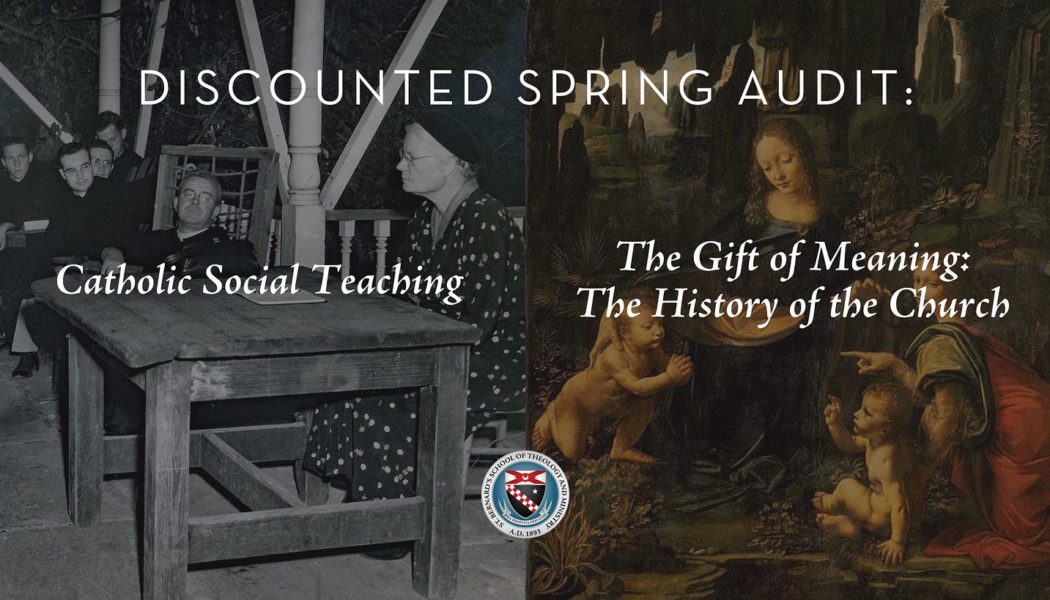

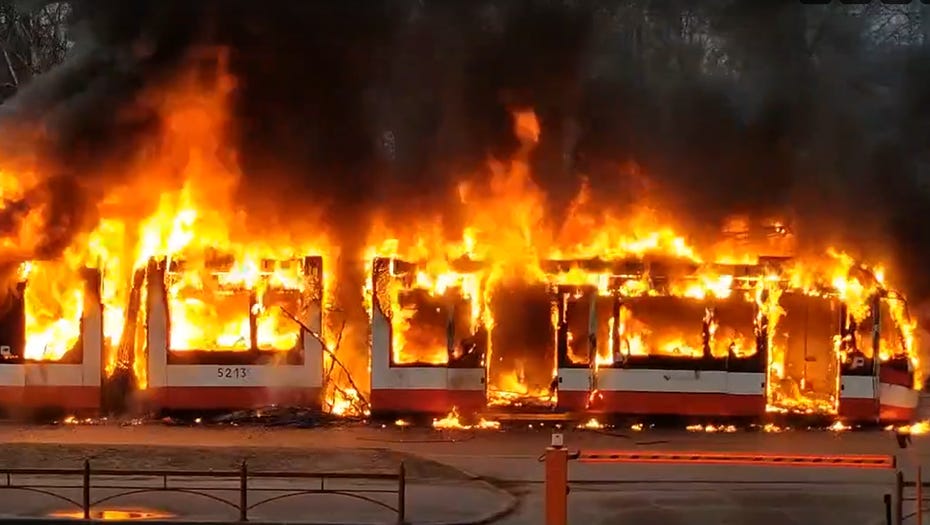
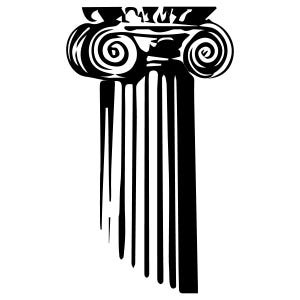
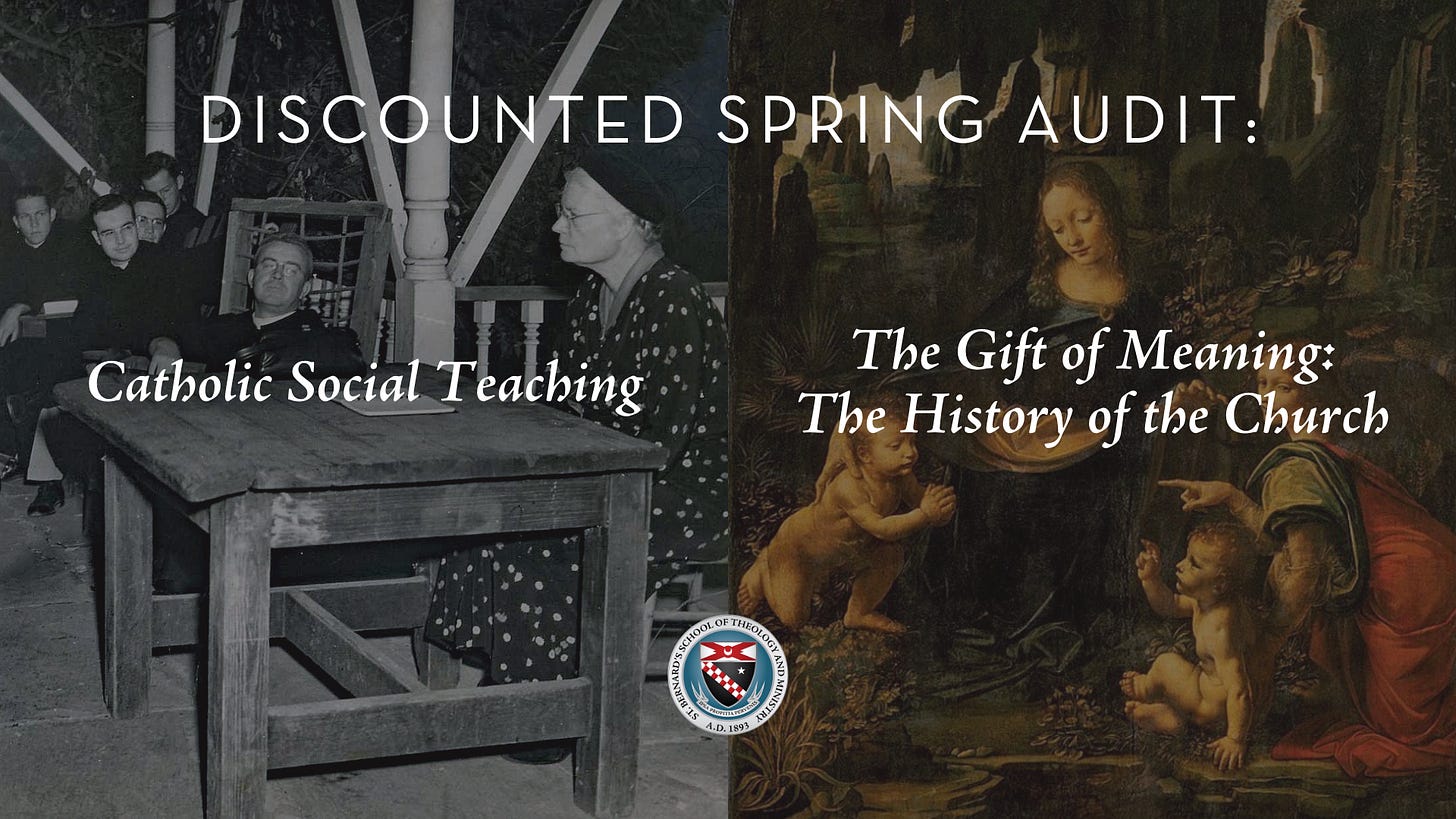

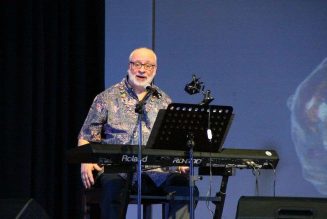


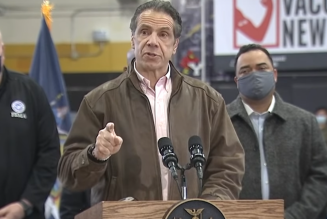
![‘Chasing Ice’ captures largest glacier calving ever filmed [language warning]…](https://salvationprosperity.net/wp-content/uploads/2020/06/chasing-ice-captures-largest-glacier-calving-ever-filmed-language-warning-327x219.jpg)

